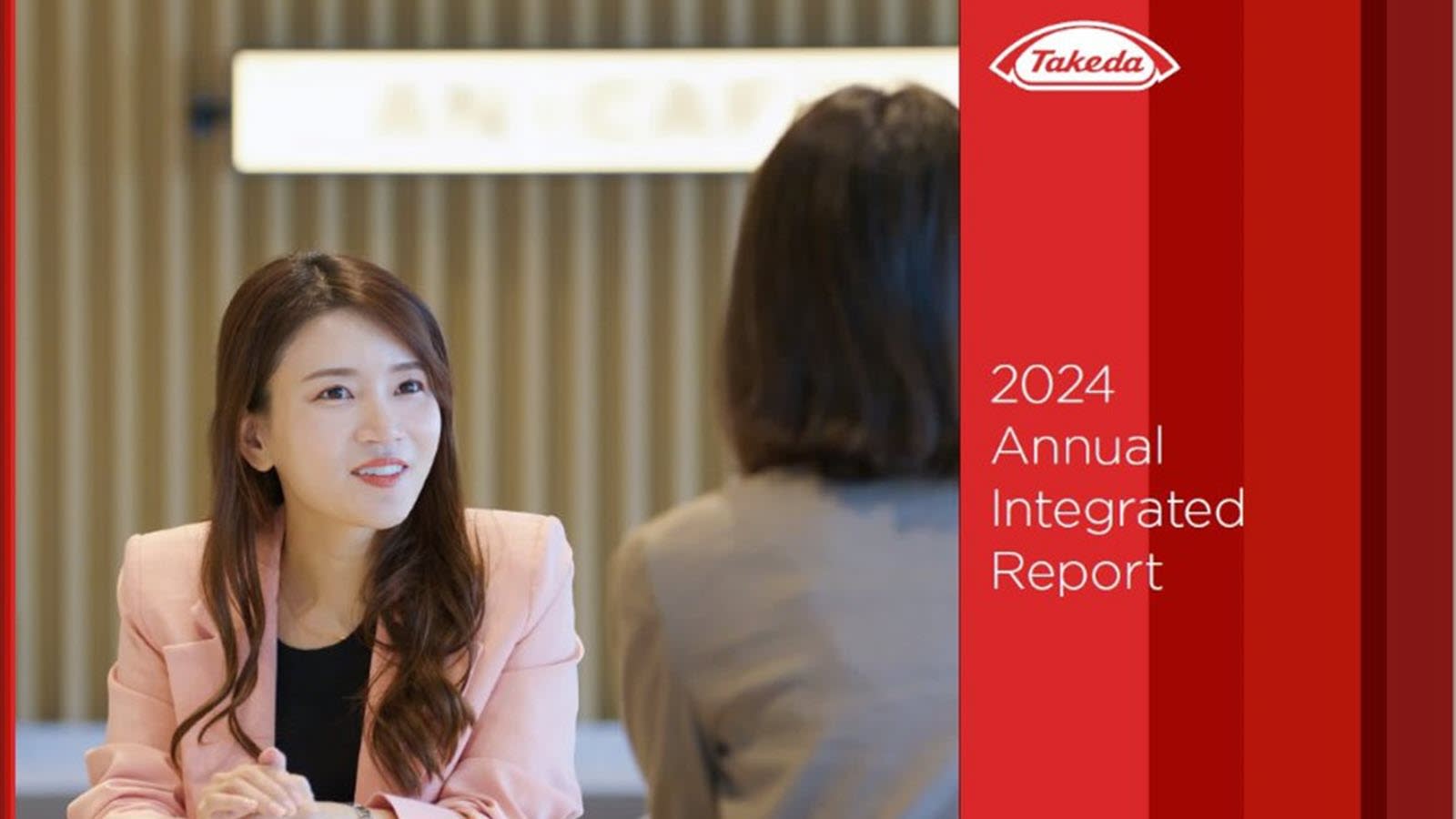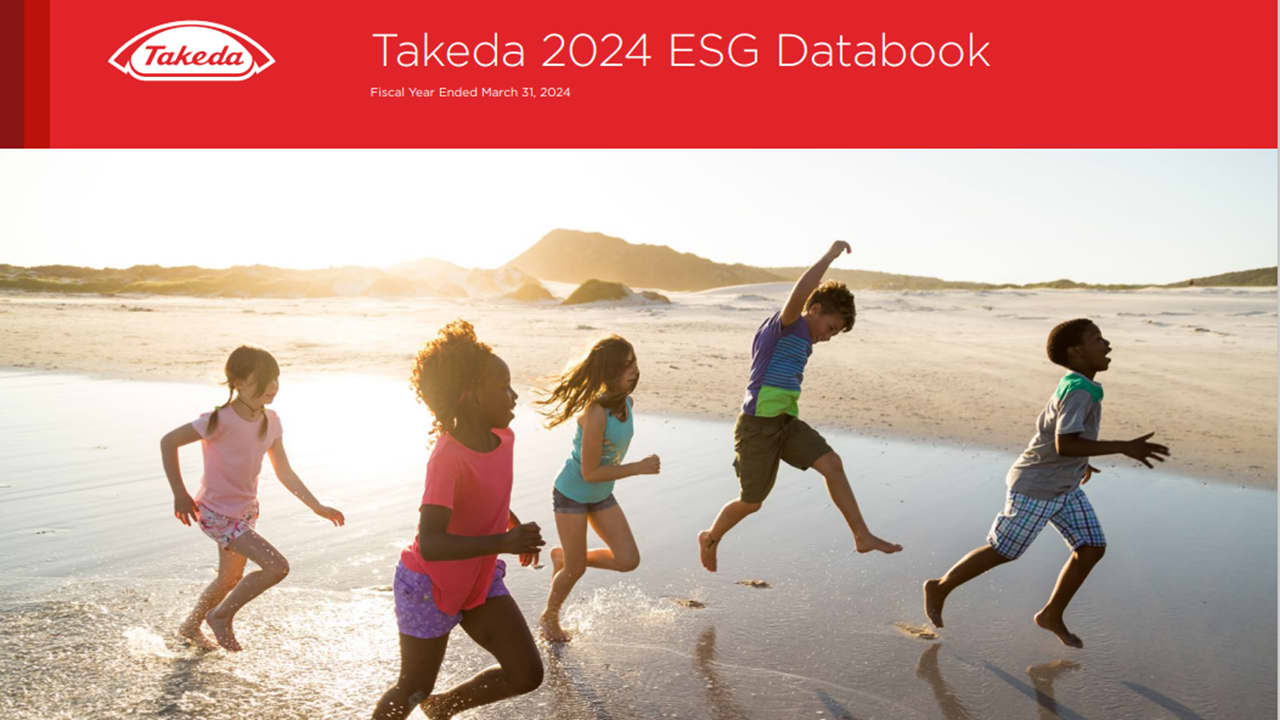Sustainability Disclosures | Takeda Pharmaceuticals
Sustainability Disclosures
Our ESG reporting is updated regularly aligned with our transparency polices, practices, and data.
We will continuously work to improve our data capture processes and reporting of ESG information, to demonstrate our commitment to transparency and our stakeholders.

2024 Annual Integrated Report

Takeda 2024 ESG Databook

Corporate Philosophy Metrics
Corporate philosophy metrics help hold us accountable for delivering sustainable growth and building trust with our external stakeholders. Our vision is to discover and deliver life-transforming treatments, guided by our commitment to patient, people and planet. These imperatives identify where Takeda must invest to deliver on our purpose. We aim to create long-term value by aligning our actions with these imperatives and unleashing the power of data and digital. We measure our progress through our corporate philosophy metrics, disclosing results annually. Read more about our corporate philosophy here.
The information below provide links to our ESG disclosures under the categories of Patient, People, Planet and Values-Based Governance.
Patient
Our approach:
- Responsibly translate science into highly innovative, life-changing medicines and vaccines
- Ethics
- Timely, Broad and Sustainable Access
- Access to Medicines
- Our Commitment to Patients
Our positions:
- Our Position on Biotechnology
- Our Position on Falsified Medical Products
- Our Position on Global Pricing
- Our Position on Value-Based Health Care
- Our Position on Health Equity
- Our Position on Access to Medicines
- Our Position on Intellectual Property for Access to Medicines
- Our Position on Data Sharing and Reuse of Health Data
More on what we do:
People
- Our approach: Talent Management
- More on what we do regarding Talent recruitment and retention efforts for scientists and research and development personnel: SASB Index Report 2024
- More on who we are: Global Environment, Health and Safety Policy
Planet
Our positions:
- Our position on Climate Change
- Our Position on Water Stewardship
- Our Position on Biodiversity
- Our Position on Responsible Use of Plastics
- Our Position on Pharmaceuticals in the Environment
Our Stories:
More on what we do:
- Resource circularity and product take-back: SASB Index Report 2024
- Our TCFD Report
- Our Commitment to the Planet
- Water Stewardship, Plastics, Biodiversity, Pharmaceuticals in the Environment and Eco-Design
- Historical Record of Takeda Voluntary Offset and EAC Purchases
More on who we are:
Values-based governance
- Our approach: Corporate Governance
More on who we are:
Information on Annual Shareholders Meetings, including Notices of Resolutions and Results of the Exercise of Voting Rights: Annual Shareholders Meetings
Information on total rewards and compensation, see Takeda’s Executive Compensation Overview and Corporate Governance Report
Our approach to Quality management: Ethics
Takeda products with safety alerts can be found in the FDA MedWatch Safety Alerts for Human Medical Products database
Historical product recalls can be found in the FDA Drug Recalls database
Our approach: Suppliers
More on who we are: Takeda Supplier Code of Conduct
- Our approach: Ethics (including Medical Ethics, Bioethics and Human Rights)
More on who we are:
More about what we do on Safety of Clinical Trial Participants: SASB Index Report 2024
More on our approach to human rights:
Our approach: Risk & Crisis Management
Matters related to internal controls and risk management rules: Corporate Governance Report
- Our approach: Corporate Giving
More about what we do:
